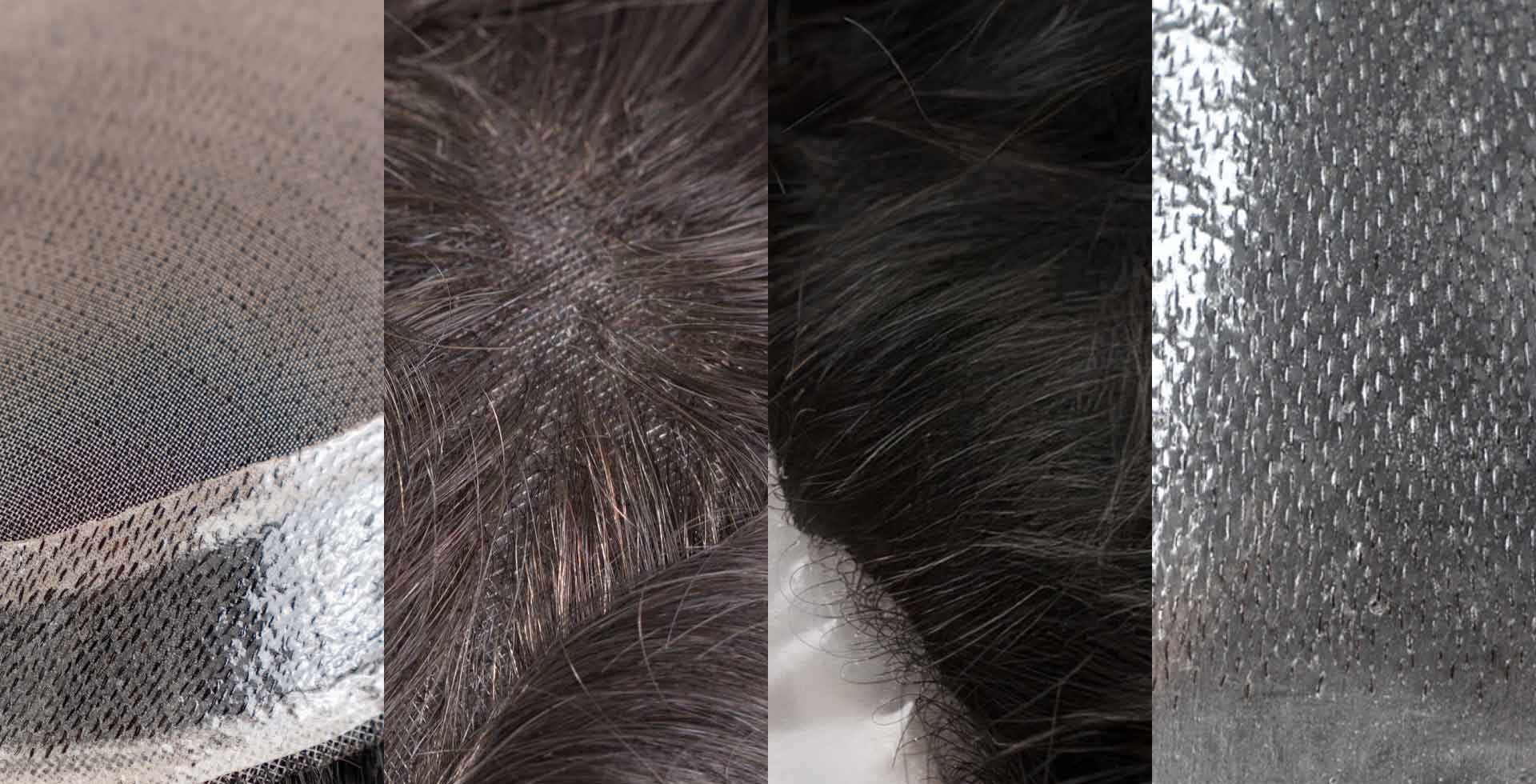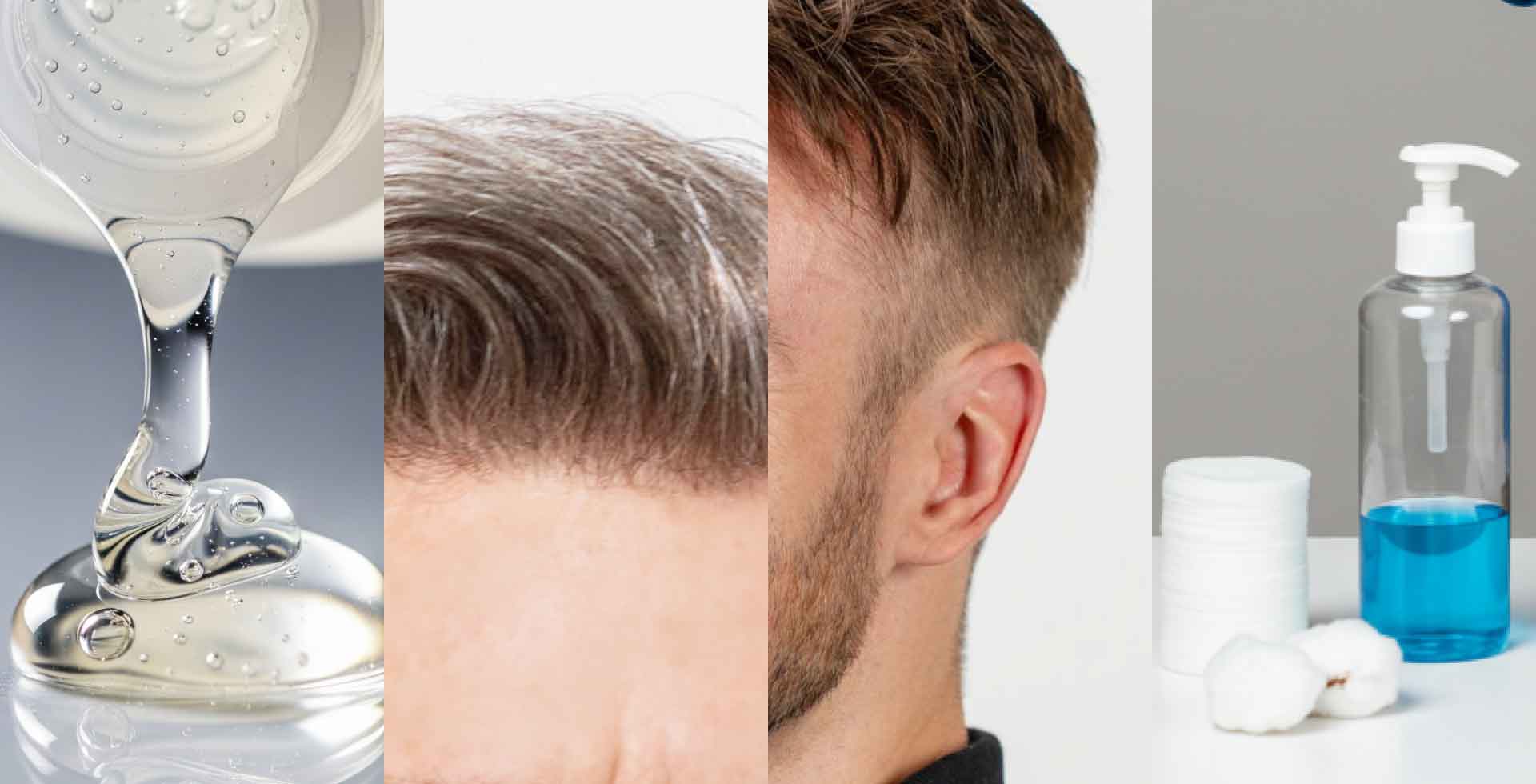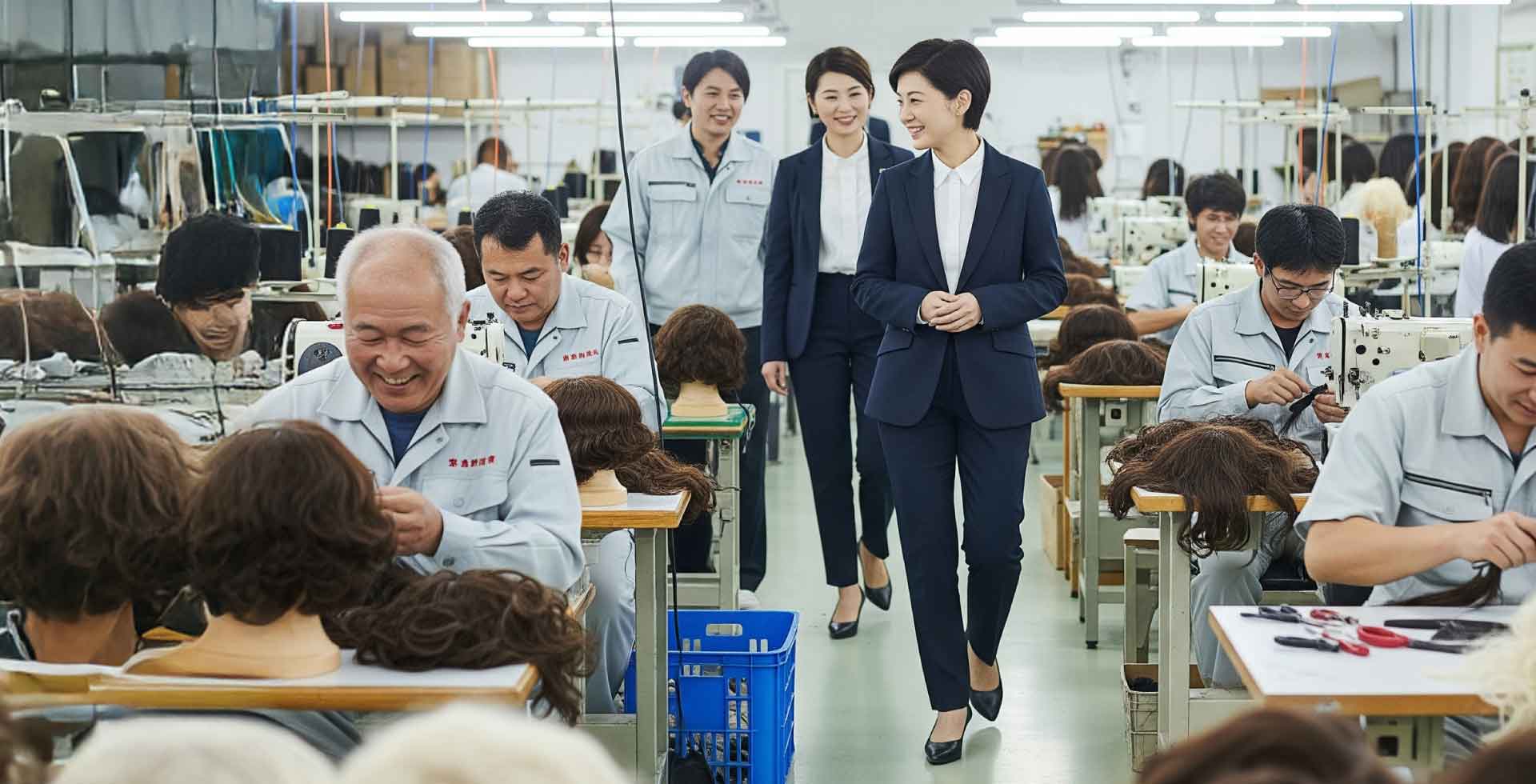Posted by Santana Fell on 24th Jun 2025
The Professional's Guide to Identifying High-Quality Toupees
In the hair replacement industry, the ability to distinguish between high-quality and substandard toupees is fundamental to business success.
Whether you're a salon owner, distributor, stylist, or retailer, understanding these quality markers directly impacts customer satisfaction, retention rates, and your professional reputation.
This comprehensive guide provides industry professionals with the technical knowledge and assessment criteria needed to evaluate toupee quality effectively.
Foundation Elements:

Base Construction Quality
The foundation of any high-quality toupee lies in its base construction. Professional-grade hair systems for men utilize specific materials and construction techniques that separate them from cheap mass-market alternatives.
Premium Base Materials High-quality toupees feature bases constructed from French lace, Swiss lace, Monofilament, medical-grade polyurethane, or a mix of two or more of these materials. French lace offers superior durability with a natural appearance, while Swiss lace provides the most undetectable finish due to its ultra-fine mesh structure. Monofilament base offers maximum durability, while Medical-grade polyurethane bases excel in a natural look and are ideal for clients requiring a realistic hairline.
Construction Integrity: Examine the base for consistent mesh density and reinforcement patterns. Quality pieces feature graduated density zones - denser mesh at stress points like the crown and temples, transitioning to lighter mesh at the hairline. The edges should show clean, sealed perimeters without fraying or irregular cuts. Inferior toupees often display uneven mesh patterns, loose threads, or inconsistent edge treatments that compromise both appearance and durability.
Ventilation Quality Professional-grade toupees employ hand-tied ventilation techniques where individual hairs are knotted into the base material. This process creates natural hair growth patterns and allows for multidirectional styling. Machine-made alternatives typically show rigid, uniform hair directions that limit styling options and appear artificial under close inspection.
Hair Quality Assessment Criteria
The hair component represents the most visible quality indicator and requires thorough evaluation across multiple parameters.
Source and Processing Standards Premium toupees utilize 100% human hair, specifically European or high-grade Remy hair, where the cuticles remain intact and aligned in their natural direction. This alignment prevents tangling and maintains the hair's natural luster and movement.
Density and Distribution Analysis Professional pieces feature realistic hair density that mirrors natural growth patterns. Standard density ranges from 100-120% of natural hair density, with higher percentages creating an artificial appearance. Quality toupees show graduated density - fuller at the crown with natural thinning toward the hairline edges. Inferior pieces often display uniform density throughout, creating an unnatural appearance.
Color Matching and Variation High-quality toupees incorporate subtle color variations that replicate natural hair's complexity. This includes slight root-to-tip gradation and intermixed highlight and lowlight strands. Single-tone pieces, regardless of hair quality, immediately signal inferior manufacturing and limit the stylist's ability to create natural-looking results.
Attachment and Integration Systems

The attachment mechanism determines both the security and natural appearance of the final application.
Adhesive Compatibility Quality bases are designed to work with professional-grade adhesives and tapes. The base material should accept adhesive application evenly without creating visible lines or texture changes. Polyurethane bases excel with liquid adhesives, while lace bases work optimally with specialized wig tapes designed for breathable materials.
Hairline Construction The hairline represents the most critical area for natural appearance. Premium pieces feature hand-tied, graduated hairlines where hair density decreases naturally toward the edge. The individual hairs should emerge from the base at varying angles, mimicking natural hair growth patterns. Poorly constructed hairlines show uniform hair direction and density, creating an obvious "line of demarcation" that's difficult to conceal even with expert styling.
Temple and Nape Design Quality toupees extend sufficiently into the temple and nape areas to allow for natural integration with existing hair. The transition zones should feature thinned hair density and varied lengths to blend seamlessly with the client's natural hair. Inferior pieces often have abrupt cutoffs that limit styling options and require extensive camouflaging techniques.
Durability and Maintenance Considerations
Durability directly impacts customer satisfaction and replacement cycles, affecting both profitability and client relationships.
Wear Testing Standards Professional-grade toupees should withstand daily wear for 6-8 weeks with proper maintenance. The base material should maintain structural integrity through multiple cleaning cycles using professional products. Hair should retain its texture and appearance through regular washing and styling without excessive shedding or tangling.
Maintenance Requirements High-quality pieces require specific maintenance procedures that should be documented by the manufacturer. This includes compatible cleaning products, recommended cleaning frequencies, and storage requirements. Hair systems requiring daily removal or special handling may indicate an inferior base construction unsuitable for professional applications.
Heat and Chemical Resistance Professional toupees must withstand standard salon processes, including heat styling up to 350°F and chemical treatments like perming or coloring (for human hair pieces). The base material should not degrade under normal styling conditions, and the hair should maintain its integrity through professional chemical services.
Economic Quality Indicators

Understanding the relationship between price points and quality levels helps establish realistic client expectations and appropriate inventory investments.
Manufacturing Origin Impact Toupees manufactured in facilities with established quality control systems typically command higher prices but offer consistent quality standards. Products from regions with lower labor costs may offer attractive pricing but often require more extensive quality verification processes.
Wholesale vs. Retail Quality Tiers The B2B market typically offers three quality tiers: economy (30-day wear expectation), standard (60-day wear), and premium (90+ day wear). Each tier serves specific market segments, and understanding these distinctions helps match products to client needs and price sensitivity.
Long-term Value Assessment While premium pieces require higher initial investment, their extended wear life and superior appearance often provide better long-term value for both the professional and end client. Calculate the total cost of ownership, including replacement frequency, maintenance requirements, and styling time to determine true value propositions.
Professional Assessment Protocol

Implementing a standardized evaluation process ensures consistent quality assessment across your organization.
Initial Visual Inspection: Conduct assessments under both natural and artificial lighting conditions. Natural lighting reveals color accuracy and hair movement, while focused artificial light exposes construction details and potential imperfections. Document findings with photography for future reference and supplier feedback.
Physical Examination Process: Handle the piece to assess base flexibility and hair attachment security. Gently manipulate the hairline area to test for loose hairs or weak attachment points. Quality pieces should feel substantial but not rigid, with hair firmly attached throughout the base.
Client Trial Considerations For high-value pieces, consider offering trial periods with appropriate deposits. This allows both professional and client assessment under actual wear conditions while protecting your investment. Document client feedback systematically to identify recurring quality issues or supplier performance patterns.
Supplier Relationship Management

Building relationships with quality suppliers requires understanding their manufacturing processes and quality control standards.
Vendor Qualification Criteria: Evaluate potential suppliers based on their quality control documentation, manufacturing certifications, and return/exchange policies. Request samples across their product range to assess consistency between different price points and styles.
Quality Assurance Protocols: Establish clear quality standards with suppliers, including acceptable defect rates, replacement procedures, and quality improvement expectations. Regular communication about quality issues helps suppliers address manufacturing problems before they impact your business.
Market Positioning Strategy Understanding quality differentiators allows you to position your services appropriately in the market. Clients seeking premium results require education about quality factors and their impact on appearance and longevity.
Conclusion
Differentiating between quality and inferior toupees requires systematic evaluation across multiple criteria, including base construction, hair quality, attachment systems, and durability factors. For B2B professionals, this knowledge directly impacts customer satisfaction, business profitability, and market positioning. By implementing consistent assessment protocols and maintaining relationships with quality suppliers, professionals can build reputations for excellence that drive long-term business success.
The investment in understanding these quality markers pays dividends through reduced customer complaints, fewer premature replacements, and the ability to command premium pricing for superior products and services. As the hair replacement market continues to evolve, professionals who maintain high-quality standards will differentiate themselves in an increasingly competitive landscape.



